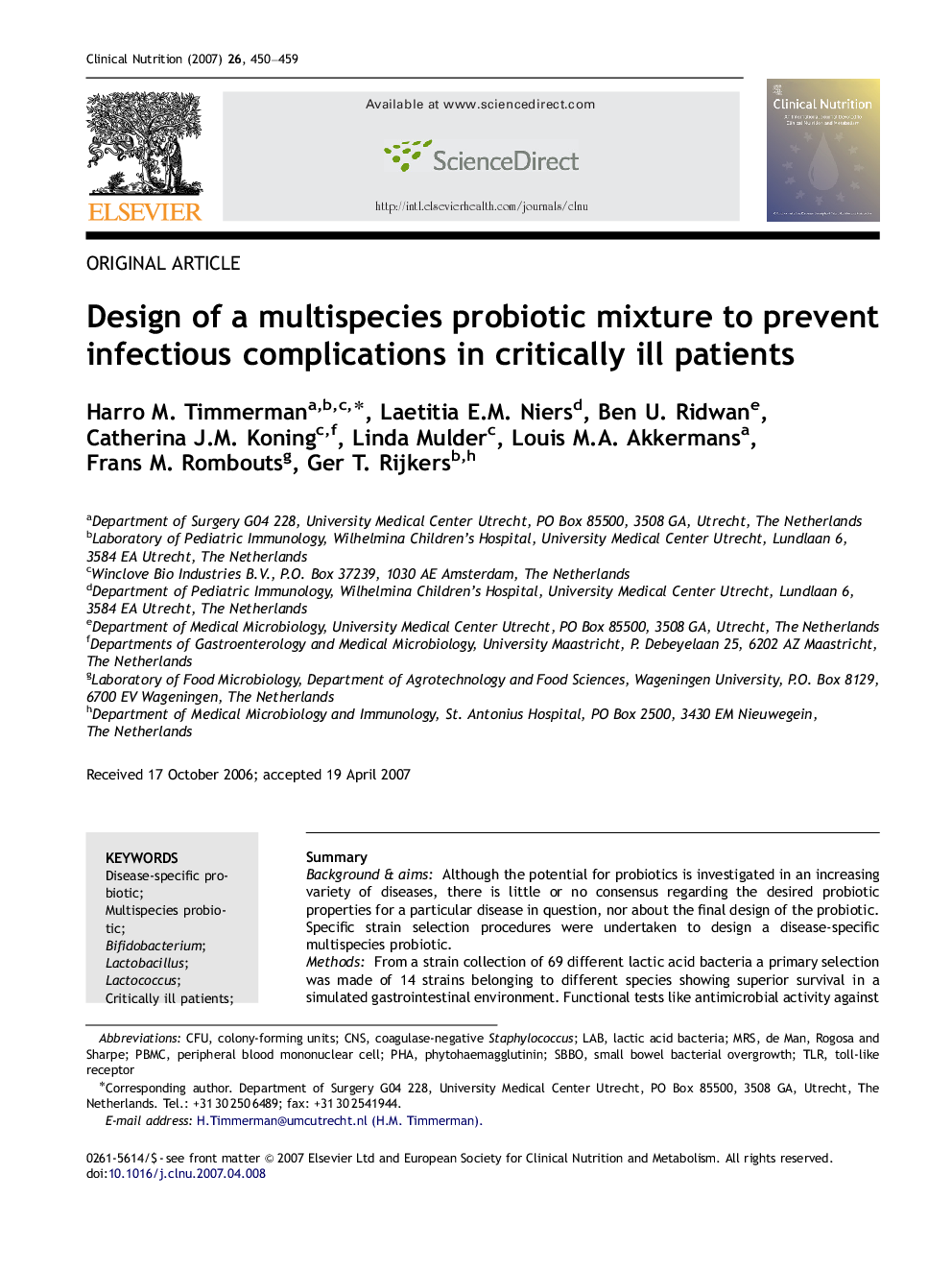| Article ID | Journal | Published Year | Pages | File Type |
|---|---|---|---|---|
| 2683371 | Clinical Nutrition | 2007 | 10 Pages |
SummaryBackground & aimsAlthough the potential for probiotics is investigated in an increasing variety of diseases, there is little or no consensus regarding the desired probiotic properties for a particular disease in question, nor about the final design of the probiotic. Specific strain selection procedures were undertaken to design a disease-specific multispecies probiotic.MethodsFrom a strain collection of 69 different lactic acid bacteria a primary selection was made of 14 strains belonging to different species showing superior survival in a simulated gastrointestinal environment. Functional tests like antimicrobial activity against a range of clinical isolates and cytokine inducing capacity in cultured human peripheral blood mononuclear cells were used to further identify potential strains.ResultsSpecific strains inhibited growth of clinical isolates whereas others superiorly induced the anti-inflammatory cytokine IL-10. Based on functional tests and general criteria regarding probiotic design and safety, a selection of the following six strains was made (Ecologic 641); Bifidobacterium bifidum, Bifidobacterium infantis, Lactobacillus acidophilus, Lactobacillus casei, Lactobacillus salivarius and Lactococcus lactis. Combination of these strains resulted in a wider antimicrobial spectrum, superior induction of IL-10 and silencing of pro-inflammatory cytokines as compared to the individual components.ConclusionsApplication of strict criteria during the design of a disease-specific probiotic prior to implementation in clinical trials may provide a rational basis for use of probiotics.
